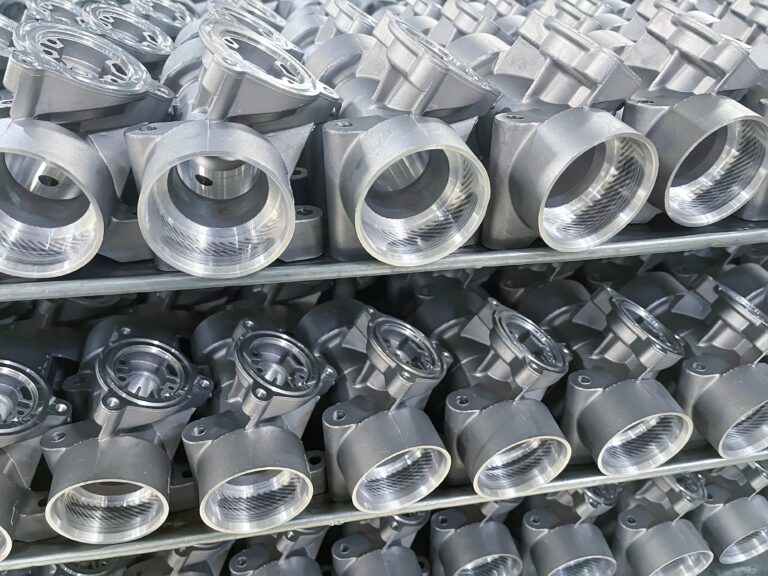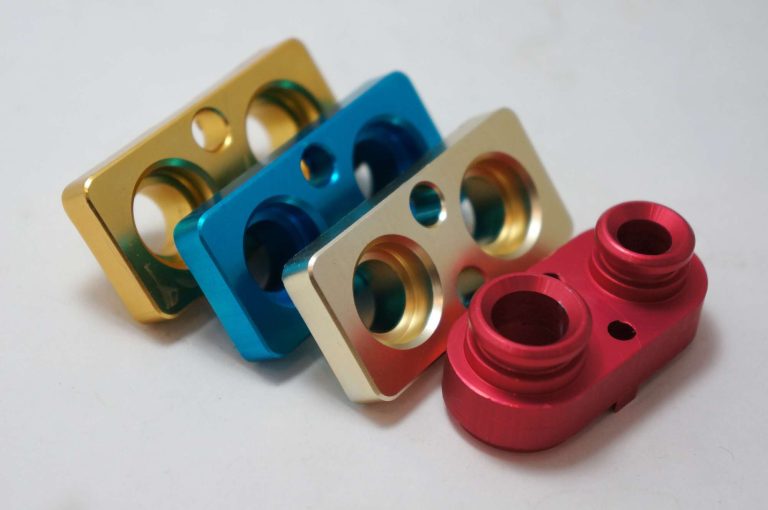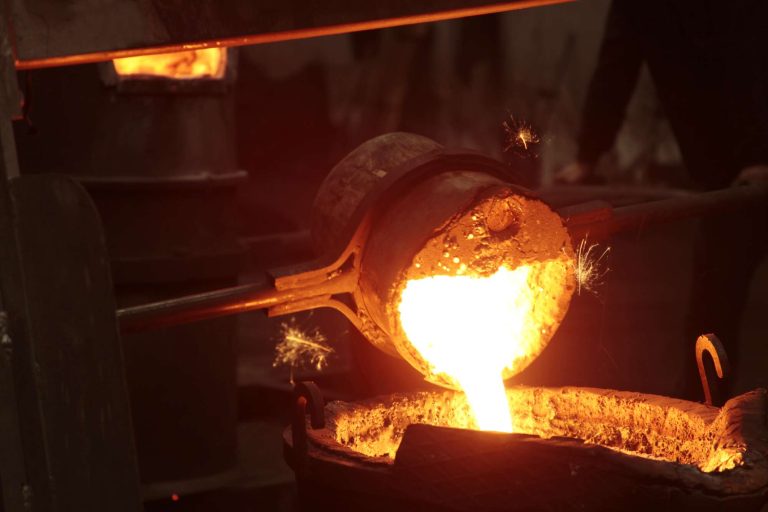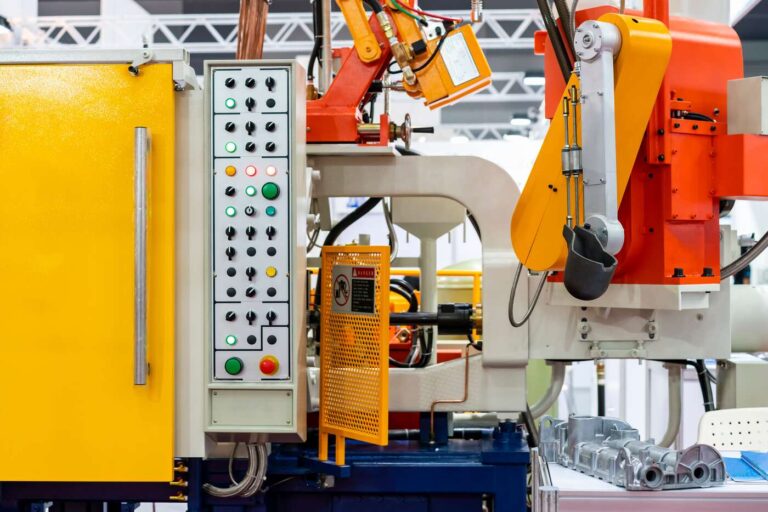High‑pressure die casting (HPDC) offers fast, reliable production of metal parts with tight accuracy and excellent strength, but what is it? This article shares each stage of casting and shows how KenWalt delivers dependable, high-quality parts for a wide range of applications.
What Is High‑Pressure Die Casting?
High-pressure die casting is a modern manufacturing technique that shapes engineered metal parts by injecting molten metal into reusable, hardened steel molds under high pressure. These molds, known as dies, take on virtually any shape: from smooth curves to intricate textures. The combination of high-pressure and detailed dies is an impressive level of accuracy, tight repeatability, and design flexibility.
HPDC delivers near-net-shape non-ferrous parts that require minimal machining or finishing, making it the go-to method for producing high volumes of precise metal components. Castings created are known for excellent hardness, machinability, and plateability.
Die casting works for a wide range of sizes. Common applications include small components like cell-phone parts and miniature toys, as well as larger pieces like aircraft engine valves, marine propellers, gas valves, transmission housings, and wheel rims. It dominates high-volume manufacturing across aerospace, automotive, industrial equipment, consumer electronics, irrigation systems, lighting, medical tools, military hardware, and more.
In everyday life, castings hide behind many familiar objects: bathroom fixtures, door handles, kitchenware, power tools, heat sinks, decorative hardware, and even cast toys. With die casting, manufacturers produce strong, accurate parts with consistent results, cost control, and fast output.
1. HPDC Machines and Methods
HPDC equipment uses clamping pressure to hold mold halves tightly while injecting metal rapidly into the cavity. There are two main methods:
- Cold-chamber: Used for aluminum, which is melted externally at 1,200–1,300 °F, then ladled into a shot sleeve and injected under pressure.
- Hot-chamber: Used for zinc, which melts at 700–800°F. A gooseneck assembly draws the metal and injects it directly into the die.
Machines range from 400 tons to over 4,000 tons of clamping force. We match machine capacity to part size and complexity for best performance and minimal defects.
2. Step-by-Step Casting Process
Here is how the process unfolds:
- Metal Melting: We heat aluminum or zinc in a furnace.
- Mold/Die: Mold halves are held together under high pressure.
- Injection: Molten metal flows in milli-seconds into the mold under high pressure.
- Solidification: Pressure holds until the metal cools and forms a solid.
- Ejection: Parts are pushed out with ejector pins.
- Finishing: We remove flash, deburr edges, CNC-machine features, add finishes, and prepare parts for shipping or assembly.
Cycle times vary. Small parts take seconds, while larger parts may require a few minutes. This keeps production efficient and cost-effective.
3. Mold Design Essentials
Molds are precision tools made from steel. They include:
- Fixed and ejector halves to form the part shape.
- Sprues, runners, and gates that guide molten metal.
- Cores and slides to create holes and undercuts.
- Ejector pins to push parts out.
- Cooling channels to control temperatures.
Good mold design improves accuracy, extends tool life, and minimizes defects in the final parts.
4. Alloy Selection
Alloy choice depends on the fit-form-function of a part’s needs:
- Aluminum Die Casting Alloys: Strong, light, and corrosion-resistant.
- Zinc Die Casting Alloys: Ideal for intricate shapes, good ductility, and easy to plate.
We help customers choose the right alloy based on strength, corrosion resistance, weight, appearance, and production needs.
5. Key Benefits of HPDC
HPDC offers several advantages:
- High productivity: Fast cycles and automation support large-volume production.
- Precision tolerances: Tight accuracy suitable for complex parts.
- Thin wall sections: Downsizing thicknesses without losing strength.
- Cast-in features: We include features like bosses and threads during casting.
- Ready-to-finish surfaces: Casting comes prepared for painting, plating, or coating.
This makes HPDC ideal for parts that require strength, detail, and repeatable accuracy.
6. HPDC vs. Other Production Methods
- Vs. Plastic Injection: HPDC gives metal parts higher load-bearing capacity and thermal resistance.
- Vs. Sand Casting: HPDC is faster, more precise, and delivers cleaner surfaces.
- Vs. Permanent Mold: Similar finish, but HPDC is better for high-volume, automated runs.
- Vs. Forging: HPDC allows more complex shapes with internal geometry.
- Vs. Stamping: Produces complex 3D shapes and reduces assembly needs through one-piece casting.
Combining casting and machining in one place, HPDC simplifies production and increases accuracy.
7. Common Challenges and Solutions
HPDC can face several issues that we address:
- Porosity: We reduce internal voids using precise gating and vacuum systems.
- Flash: Excess metal is trimmed off during finishing.
- Die wear: Molds/dies are monitored for wear and refurbished as needed to extend life.
- Surface flaws: Controlled injection temperature and lubricants prevent casting flaws.
Early design reviews and testing avoid many issues before production.
8. Finishing and Assembly
After casting, parts go through several steps:
- Trimming: Custom tools cut off flash and scrap metal is recycled.
- Hand deburring: Sharp edges are removed and smoothed for safety and fit.
- Tumble Deburring: In-house tumble deburring removes excess flash and burrs.
- CNC machining: We add precision holes, threads, and surfaces.
- Surface coatings: Options include plating, anodizing, powder coating, and painting.
- Assembly: Parts can be assembled and packaged in-house.
In-house finishing means faster delivery, better quality control, and easier traceability.
9. Industry Applications
HPDC serves many industries:
- Automotive: Engine parts, EV components, structural brackets.
- Aerospace: Brackets, control housings, light hardware, handles.
- Electronics: Enclosures, heat sinks, precision connectors.
- Medical: Equipment frames, diagnostic tool components.
- Industrial: Valve bodies, pump housings, gear cases..
- Consumer Goods: Appliance parts, hardware, lighting fixtures.
Its versatility makes HPDC a trusted solution for parts that need reliability and detail.
10. Ongoing Innovation and Trends
HPDC continues to evolve:
- Automation: Robotics handle ladling, spraying, parts handling, finishing, inspection.
- Sustainable practices: We recycle scrap metals and use efficient energy processes and use 36kW Solar System to generate electricity from the sun.
- Giga Press: Large single-shot casting for major structural parts like EV frames.
- New Alloys: Metals are being developed for higher strength and heat resistance.
These trends improve speed, reduce costs, and open new possibilities for design.
11. Quality Assurance Systems
KenWalt ensures quality by:
- In-process checks monitor each cycle for consistency.
- Engineering reviews early on catch mistakes before production.
- 100% inspection is available upon request.
- Tooling maintenance prevents wear from affecting parts.
- Traceable records track each batch for quality control.
These steps keep defects low and guarantee reliable results.
12. Case Studies & Prototyping
Before moving to full production, KenWalt runs prototyping runs. We use short-run tooling and iterative testing to refine parts. This helps us:
- Confirm fit and function before investment.
- Adjust metal flow, wall thickness, and features.
- Avoid delays and reduce scrap.
Our prototyping service saves time and ensures the final part performs as intended.
High-Pressure Casting: The Bottom Line
KenWalt is known for producing durable parts at scale, expertise in alloy selection, detailed mold design, and quality finishing to deliver parts ready for any application. Our integrated process, from prototyping to coating, ensures fast cycles, tight tolerances, and exceptional quality.
Ready To Manufacture Stronger, More Efficient Parts?
Contact KenWalt Die Casting today for help with design reviews, project planning, or casting solutions. Whether your part is tiny or structural, we’ll help you make it built-to-last.




